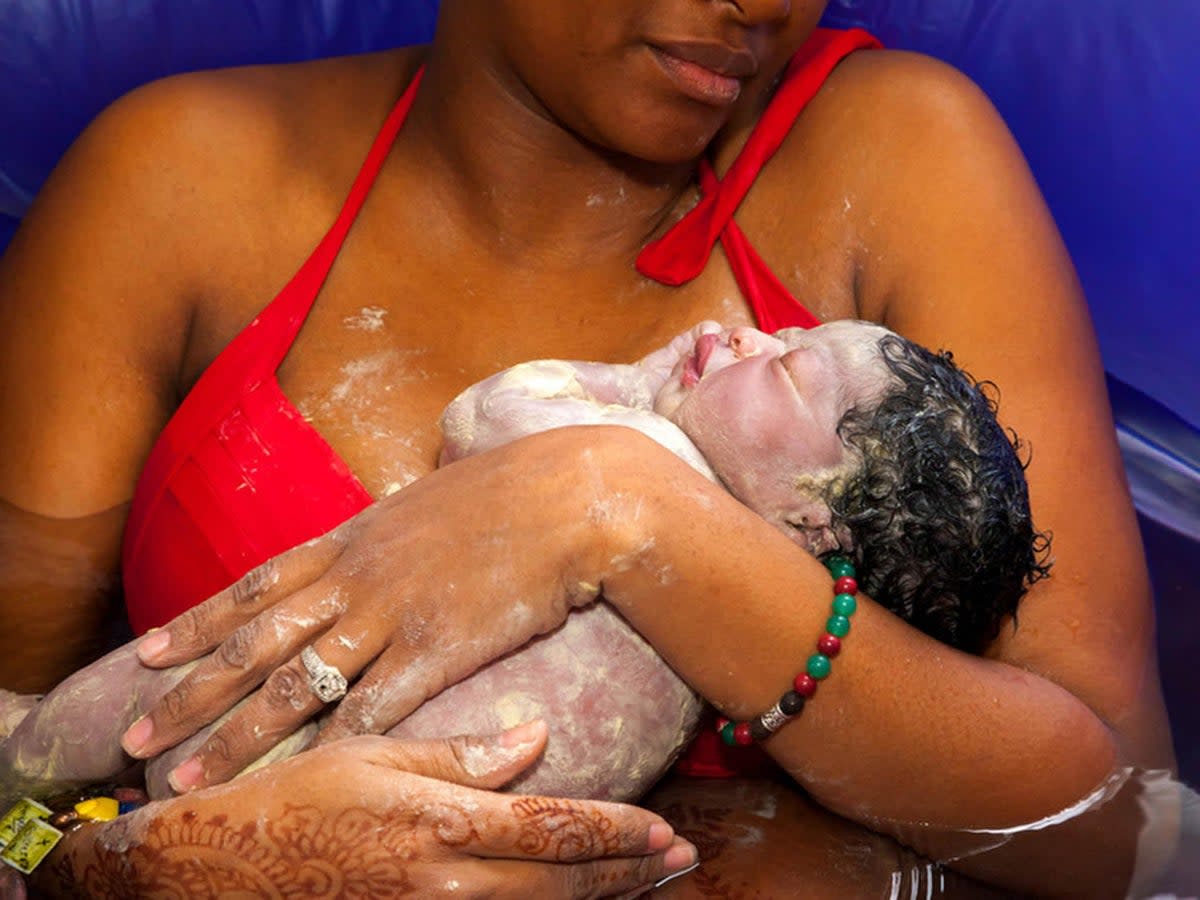Voices: Freebirthing is more popular than ever – but is it dangerous?

Anna is in the ebbs and flows of active labour. She arrived at hospital already well-established just under an hour ago, and she’s been moving with her body.
Her hips sway back and forth slowly to the sound of “Sunrise” by Norah Jones. She stops talking to us verbally and begins to make the transition. It’s all about body language now. Contractions begin to sound more guttural, and I suggest perhaps it’s time to get into the water if she’d like to deliver her baby in the pool. She nods and gracefully climbs in.
A mere 45 minutes later, amid the soothing reassurance of her partner and myself, she bears down for a final time and her baby is floating free in the water. Instinctively, she lifts her baby gently to the surface.
He scrunches up his face, then lets out an urgent-sounding wail that midwives hear and recognise from down the corridor as being a newborn’s very first cry. “Ah nice, sounds like room seven has delivered just then! I’ll start the birth register..."
I’ve described a fictionalised scene where a “low-risk” woman arrived in spontaneous labour at a midwife-led unit, and managed to have an uncomplicated vaginal delivery. I’d listen in to the baby’s heartbeat for one minute every 15 minutes, and monitor the woman’s pulse, temperature, blood pressure and breathing rate.
That’s about five minutes of “safety checks” per hour, and the rest of the time, it’s an encouraging watch-and-wait game. I can honestly say it’s goosebump-inducing when you watch a woman trust her body and all goes to plan.
If I had one altruistic wish in the world, it would be that every woman managed to experience their dream delivery – whatever that may look like. Some women’s perfect birth is an elective caesarean section, and that journey can be equally as tear-jerking and beautiful.
Others opt for an epidural in labour as soon as they possibly can because they admit they “aren’t good with pain.” I think the best thing you can do in pregnancy is look within yourself and try to determine what will work for you. No medals are rewarded for conforming to any kind of perceived social norms, and each birth is as unique as one’s fingerprint.
Sometimes we strive for our perfect birth, but a factor beyond all our control puts a stopper to our best-laid plans. There are many health conditions out there that benefit from individualised consultant-led care pathways, but the thing in labour that midwives monitor most astutely is the baby’s heart rate. That’s because prolonged contractions (among other factors) can sometimes lead to a lack of oxygenation from the placenta over time.
Severe hypoxia can lead to long-term mental health conditions for the baby, and this is the main reason why a woman might suddenly be advised to have an emergency caesarean section or, if she were fully dilated, an instrumental delivery. Our job is to try and deliver the baby in the safest condition we possibly can, not just to hurry a birth along.
On to freebirthing. This is an active choice by a pregnant person to give birth without a trained professional present. The UK saw a rise of the phenomenon during the coronavirus pandemic – when women were understandably distraught after being told their partners weren’t allowed into hospital with them, and there was fear of catching the virus as an inpatient.
Midwife-led units were closed due to a pooling of staff to the core units, and some regions saw homebirth community teams disbanded temporarily.
This led to only one perceived option for some, as a hospital birth just wasn’t right for their circumstances. Others chose to freebirth because they felt they’d be safer away from medical models of childbirth, or because they had previously had a traumatic experience in hospital. Each circumstance is very individual, and it’s part of our role as a midwife to be empathetic and supportive of everyone’s birth choices.
Freebirthing is legal in the UK. Birth partners and doulas may attend, but could be fined up to £5,000 if they assume the role of a midwife in any way.
My utmost worry here would be that unless you’re still astutely aware of foetal movements from the beginning to the end of labour, which many women are not, it’s impossible to know if your baby is becoming hypoxic.
It takes three years of intense training as a student to even begin to grasp the subtle changes in which the foetal heart rate responds to reduced oxygenation – it’s not as simple as just checking that the baby’s heartbeat is audible.
Even if you opted for a home birth, surely it wouldn’t hurt to have an experienced midwife there too, who could let you and your partner know if there are any concerns along the way. Isn’t that the best of both worlds?
If you’re considering freebirthing, I’d recommend critically reviewing all the research and literature that’s out there, and then discussing your plans with your midwife.
At the very least, your midwife will be able to talk you through how you can prepare your home, and how to register your baby’s birth. It might be that an advanced care plan could meet individual needs while also involving a level of professional assistance.
Midwives are here to support families and their wishes but, as one of the four key principles of the NMC Code of Conduct is to preserve safety, we will always be looking to minimise risks to mothers and babies where we possibly can. As Ina May Gaskin once famously wrote: “Birth is safe only in retrospect.”
If your local maternity unit appears to be running short on staff which is impacting patient care, I urge you to send an email to your MP.
Lizzie Romain is a practising midwife on the NMC register


